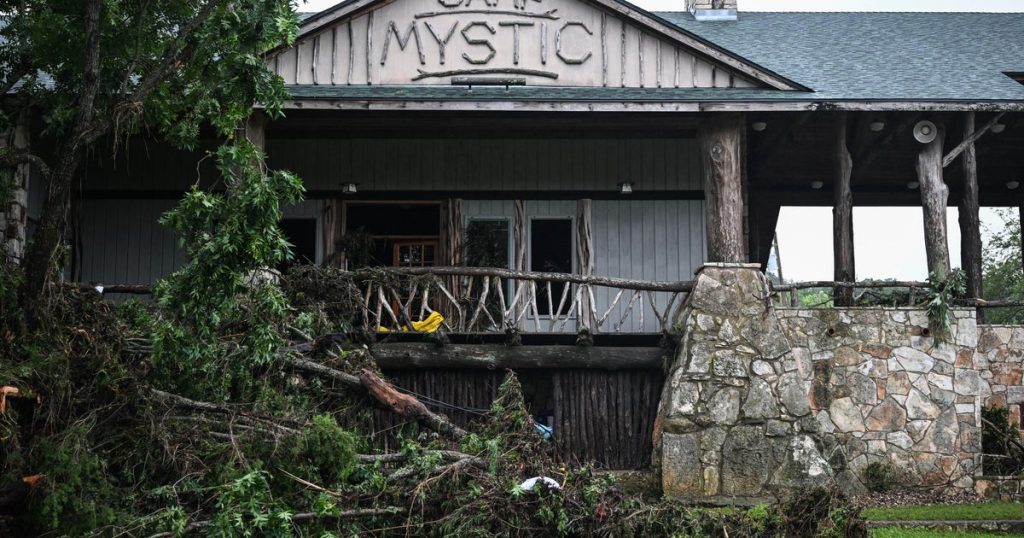Tragedy has struck North Texas as two young girls, victims of disastrous flooding, have been confirmed deceased. Lila Bonner, 9, and Eloise Peck, 8, were reported missing after the catastrophic floods that swept through Central Texas. The ongoing search and rescue operations continue to uncover the devastating impact of the flooding, with many families anxiously awaiting news of their loved ones.
| Article Subheadings |
|---|
| 1) Identifying the Victims |
| 2) Ongoing Rescue Efforts |
| 3) The Community Response |
| 4) Official Statements and Actions |
| 5) Long-term Implications |
Identifying the Victims
The tragic deaths of Lila Bonner and Eloise Peck represent only a fraction of the broader calamity affecting Central Texas. The missing girls were among a group of campers at Camp Mystic, located near the Guadalupe River. Into the early hours of Friday, severe flash flooding swept through the area, resulting in a disaster that has left local families devastated. During a news conference on Sunday, authorities detailed that the search teams have accounted for at least 79 fatalities and over 41 individuals who remain unaccounted for, intensifying the urgency surrounding the ongoing rescue efforts.
A sign outside the Peck residence poignantly states that she “lost her life in the tragic flooding,” underscoring the immediate emotional impact on their families. While Bonner’s family confirmed her death, searches are still ongoing for another camper, Hadley Hanna, who remains missing and adds to the heartbreak of the incident.
Ongoing Rescue Efforts
In response to the floods, officials have mobilized extensive resources for search and rescue operations in the Texas Hill Country. Rescuers have been deployed on the ground, in the air, and on water to find any survivors. Local, state, and federal agencies are coordinating to ensure no stone is left unturned in the search for missing individuals. Governor Greg Abbott emphasized the importance of persistence in the rescue efforts, stating that “every minute counts” and that all state agencies are instructed to proceed with the mindset that those missing may still be alive.
Search teams, including specialized rescue units and Texas game wardens, are combing through treacherous terrain, analyzing flooded riverbanks, and even venturing into trees where evacuees have sought refuge. This large-scale effort showcases the heightened urgency as communities rally behind the victims to restore safety and hope.
The Community Response
The Central Texas community has responded with compassion and solidarity, coming together in times of crisis. Many local organizations are mobilizing resources, offering support and shelter to affected families. In addition to practical help, emotional support is being extended through counseling services and community gatherings, helping individuals cope with the trauma of this unforeseen disaster.
Local families have also expressed their desperation for updates on missing loved ones. Reports highlight that some may remain unaccounted due to communication outages resulting from the floods. Such uncertainty amplifies the emotional burden on families waiting to hear good news. Local churches and community centers are becoming hubs of support as residents gather to pray and provide mutual aid during this trying time.
Official Statements and Actions
Amidst the chaos, various officials have stepped up to address the situation. President Trump signed a major disaster declaration for Kerr County on Sunday, facilitating the delivery of federal assistance. Governor Abbott toured the flooded areas, describing the scene as “horrendously ravaged.” He called on all Texans to reflect and pray, urging community members to seek strength as they navigate the aftermath of this disaster.
“My instruction to every state agency involved in this is to assume everybody who is missing is alive,” Abbott said.
His statements and proactive measures signify a unified front amongst state officials to ensure swift and effective responses in the weeks and months to come.
Long-term Implications
As the immediate search and rescue efforts transition into recovery operations, officials are beginning to consider the long-term implications of the flooding. Rebuilding efforts will undoubtedly be complex and costly, as many structures, homes, and community facilities have been decimated. Residents are encouraged to assess their damages and begin the process of recovery when it is safe to do so, but the path to normalcy will likely be long.
Local leaders are already discussing plans for future flood mitigation strategies, learning from the current tragedy to prevent similar occurrences in the future. Increased funding may be necessary for infrastructure improvements, and public safety initiatives will be bolstered as the community comes to grips with the reality of climate-related disasters.
| No. | Key Points |
|---|---|
| 1 | Two young girls from North Texas have been confirmed dead amidst the flooding disaster. |
| 2 | Over 79 individuals are confirmed dead, with more than 41 still unaccounted for. |
| 3 | Search and rescue operations are ongoing, involving local, state, and federal agencies. |
| 4 | Community support in the aftermath includes emotional and practical assistance for affected families. |
| 5 | Officials are implementing disaster declarations and exploring long-term recovery and flood mitigation strategies. |
Summary
The recent catastrophic floods in Central Texas have left a profound impact, claiming lives and devastating communities. As rescue operations unfold, the collective response underscores a commitment to support affected families. Official responses point toward aiding recovery efforts and the need for long-term solutions to mitigate future flood risks, highlighting the resilience and solidarity of the Central Texas community in the face of adversity.
Frequently Asked Questions
Question: What caused the flash floods in Central Texas?
A combination of heavy rainfall and rapid water accumulation led to the flash floods, which swept through the region unexpectedly.
Question: How is the local community responding to the disaster?
The community is coming together to provide support through shelters, emotional counseling, and gathering for prayer.
Question: What are the long-term recovery plans following the flooding?
Local officials are discussing flood mitigation strategies and infrastructure improvements to prevent ongoing disasters in the future.


